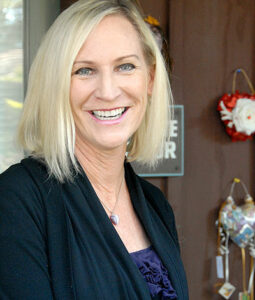As nonprofits and businesses begin to plan to reopen their facilities, there are several aspects to consider. It’s important for leaders to understand where their people are mentally and prepare accordingly. Some will be enthusiastic about returning to the office, while others may not want to venture back yet. Still others may want to reenter in theory but worry about risks to their health and the safety of their loved ones.
prepare accordingly. Some will be enthusiastic about returning to the office, while others may not want to venture back yet. Still others may want to reenter in theory but worry about risks to their health and the safety of their loved ones.
Organizations can’t just turn the lights back on and hand out masks at the door to the returning workforce. Before a vaccine is available, the office experience won’t remain as it was before the pandemic. Even after reopening, attitudes toward offices will probably continue to evolve. Therefore, leaders must identify and mitigate workplace risk to ensure that they are both safe and productive. And they must do so in ways that build trust among employees. This will help their rattled workforce believe in the future.
>>Leaders and boards will have to rethink their service delivery models.
Operations will have to evolve in response to the ever-changing environment in order to grow and thrive. The recovery will mean restarting and maybe even reinventing operations in an unstable world of shifting conditions. Success will be defined by the nonprofit’s ability to balance resilience, adaptability, and prediction. Ask yourself if your organization is agile enough to adapt to changes if you are resilient enough to sustain unforeseen shocks, and how accurate you are at predicting the future.
Many nonprofits are pleasantly surprised at their success in switching to remote work and virtual programming. They see the possibility of creating a more flexible, adaptable workplace. It is clear that technology will play a central role in the office of the future. However, some employees have enjoyed the new experience of working remotely and others have been fatigued by it. Therefore, leaders will have to manage which employees come to the office depending on employee preference and ability to keep them safe.
>>Developing a solid plan to reinvent the workplace will be a key to success.
Organizations will have to distinguish between which interactions can happen remotely and which ones require face-to-face presence. Some are considering a hybrid approach with employees working from home on certain days and coming into the office for collaborative meetings. Ultimately, the goal of this reinvention will be to create a safe environment where people can enjoy their work, collaborate with their colleagues, and achieve the mission of their organizations.
Bain & Company advises leaders not to wait until they have all the facts before making hard decisions. Rather, they need to commit to learning by doing—developing a pragmatic campaign for returning to work and getting started. They recommend the plan of action for recovery should be: advance, retreat, adapt, and repeat.
- Advance: Organizations will return workers to their work sites in waves, adding new waves or growing existing ones over time.
- Retreat: Changing conditions in the community, among vendors or at the worksite will demand rapidly shrinking waves—or withdrawing them entirely.
- Adapt: Organizations need fast feedback loops to learn and apply lessons from each site and each retreat.
- Repeat: Resilience, which will define the winners, is the ability to retreat, adapt, and try again.
>>Our local nonprofits are approaching their reopening plans with various considerations.

Jackie Carrera, CEO Santa Barbara Foundation
Jackie Carrera, CEO of Santa Barbara Foundation (SBF), explains that “in preparation for our eventual return to the office, the SBF had an internal team review the RISE guide and all the resources made available by the State of California and Santa Barbara County Public Health Department. SBF co-led a working group that helped to prepare specific guidance for community organizations located in the supplemental documents incorporated in the plan. Internally, SBF is working to integrate the plan into practice once we begin our phased reopening when it is safe.
“We needed to consider the operational, spatial, and behavioral aspects of changes necessary to ensure our employees’ safety and well-being. Hours of thought have been devoted to every detail: from something as simple to how our employees enter and exit the office or how they make their morning cup of coffee in the office. Our focus also included technical aspects like vigorous cleaning of “high touch” surfaces and installing approved air filters.
“As we moved through the mechanics of making our office safe from possible pathogens, it has been equally important to communicate a change in the office culture. Early on, education for our staff has helped establish proper protocol concerning everything from office visitors (deliveries, required maintenance) and health checks to wearing masks.
“These expectations have been enthusiastically adopted, with a positive mindset, to help ensure participation and adherence to our new social norms. SBF’s employees understand the importance of staying home when they feel ill, washing their hands properly, and wearing a mask.
“These behaviors are what foster trust and communicate respect for themselves and the community we serve. These changes have educated our staff on their own perception of safety and execution of the plan once we begin phased reopening when our community is safe and ready.
“Additional items to consider for phased reopening:
- School schedules will impact family services, child care, youth programs, and the ability of staff with children to return to work.
- Access to safe public and private transportation will impact how people get to and from work and programs that transport individuals as part of their services.
- How can your organization’s mission be best achieved with given resources, knowledge, and human capital?
- Are there opportunities to adapt/pivot business?
- Are there capital items needed to make programming happen in a safe and meaningful way?
- Do you have internal/external publications, communications, and website updated? Do they comply with program and governing procedures?

Steve Ortiz, President & CEO of United Way of Santa Barbara County (UWSBC) says, “Our staff has been working remotely since March 16th. However, in preparation to reopen as allowed and approved by local governing agencies, we are working to ensure that the UWSBC’s office building and safety protocols deliver the safest conditions possible for our staff and guests.
“During the past couple of months, UWSBC management has reviewed a variety of research and has consulted with multiple HR sources, SBC Public Health Department, and OSHA representatives. Furthermore, our management team has attended many webinars specific to COVID-19 safety guidelines.
Additionally, we have assigned one staff member to oversee the implementation and adoption of the new guidelines. That staff member has attended robust multi-day safety webinar/classes specific to COVID-19 guidelines and has received various certifications. After reviewing best practices, we updated UWSBC’s Illness and Injury Prevention Program and created UWSBC’s COVID-19 Prevention Program. In short, UWSBC has invested dollars to upgrade systems, vendors, and to purchase supplies to ensure the safest office environment possible as we prepare to reopen.”

Heidi Holly, Executive Director Friendship Center
Heidi Holly, Executive Director of Friendship Center, explains that “like many nonprofits, we had to quickly pivot and develop virtual and other relevant services for our clients during these difficult times. The key to our success is weathering the storm, re-thinking our strategy, and being resilient during these tumultuous times. When we re-open our sites, retaining virtual activities, the continuation of innovative programs, in addition to on-site services will be key to our success.
“We will open to members at stage 4 according to Governor Newsom’s requirements, in addition to approval from the Public Health Department. We plan on opening at 20 percent of our capacity and tier our services to clients with a morning and afternoon shift.”
Friendship Center enlisted volunteers for an ad hoc Visioning Committee. These committee members planned out every step of the reopening for adult day services and caregiver support. They even created a moment by moment schedule of activities listing each person’s responsibilities. Once they reopen, everything will work smoothly even though it will be a new service delivery model.
Carrera advises that “additional resources are available from OSHA; the CDC guidance in an office setting, and in community spaces, as well as an outline of conditions that may leave some staff at greater risk, based on current knowledge of the disease.”
